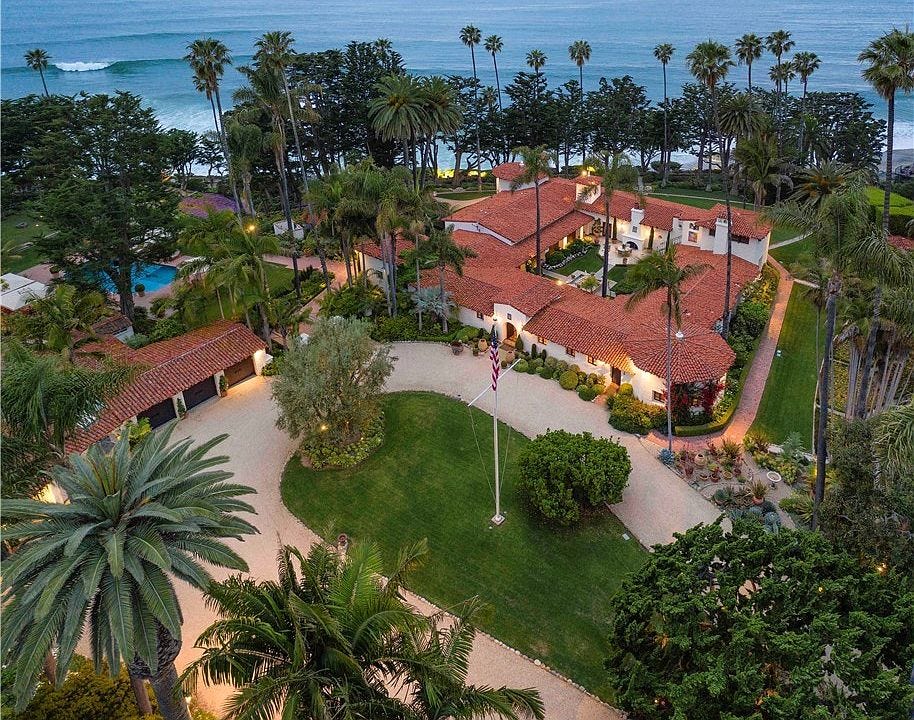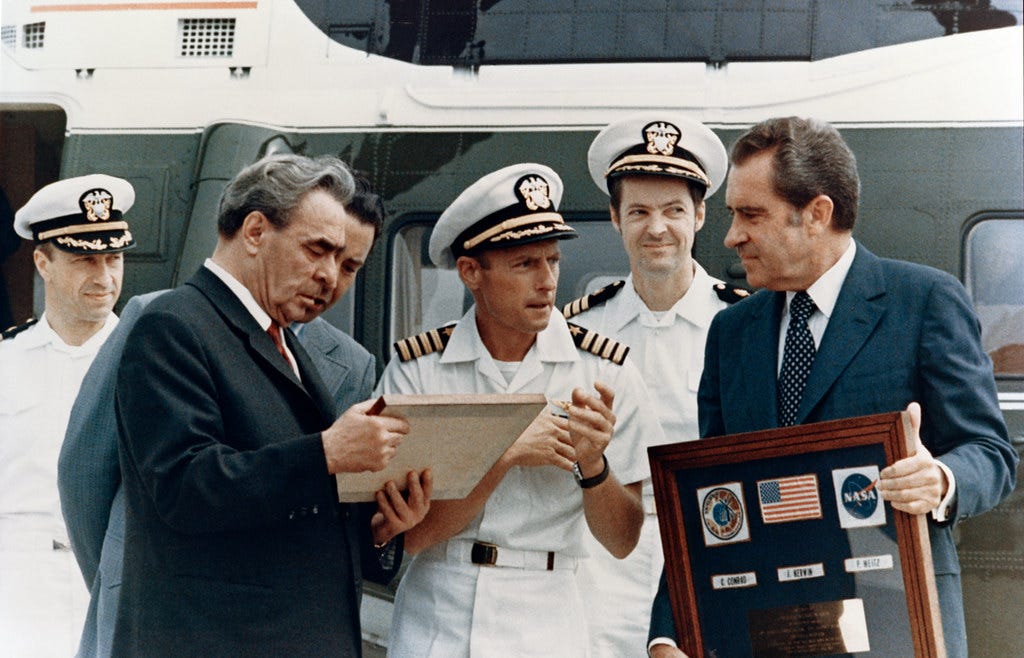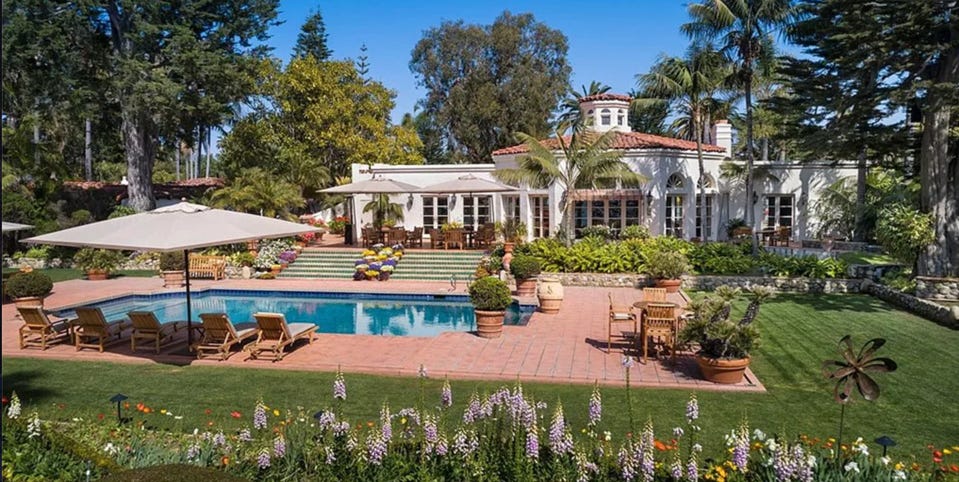The Historic Significance of La Casa Pacifica: President Nixon's Western White House
La Casa Pacifica, President Richard Nixon's Western White House, symbolizes both historical significance and coastal elegance. Nestled in the Cottons Point Estates/Cypress Shores gated community in San Clemente, California, this classic California beachfront mansion boasts breathtaking views of the Pacific Ocean from its commanding blufftop position.
Built in 1926 for Hamilton H. Cotton, one of San Clemente's founding financiers, the estate is a stunning example of Spanish Colonial Revival architecture. Designed by Carl Lindbom, it features white stucco walls, red tile roofs, arched colonnades, and wrought-iron balconies—hallmarks of Mediterranean elegance that helped define the character of San Clemente itself. The home quickly became a gathering spot for political and social elites, hosting dignitaries including President Franklin D. Roosevelt.
President Nixon acquired the estate in 1969, shortly after taking office, and transformed it into his cherished retreat. Modifications included replacing a tennis court with a swimming pool, adding a 1,500-foot protective wall, and equipping the grounds with presidential-grade security and communication systems, including a helipad and secure telephone lines. At nearly six acres with 9,000 square feet of living space, the estate now features ocean-view offices, an entertainer's pavilion, and a master suite with a magnificent bathroom.
During his presidency, Nixon welcomed numerous world leaders to La Casa Pacifica, including General Secretary Leonid Brezhnev of the Soviet Union and Japanese Prime Minister Eisaku Satō. These informal gatherings lent a relaxed yet serious tone to major diplomatic discussions, showcasing the estate’s value not only as a retreat, but as an influential outpost of American foreign policy.
Nixons Around Orange County
Born on January 9, 1913, in Yorba Linda, California, Richard Nixon spent his formative years in this quaint Orange County town, about forty miles from San Clemente. Today, his birthplace remains preserved as part of the Richard Nixon Presidential Library and Museum.
In high school, I visited the Nixon Library for a group project and had the chance to interview Ed Nixon, the President’s brother. He bore a striking resemblance to Richard and shared the same deep baritone voice. After answering my questions, Ed asked about my college plans. When a classmate's father jokingly suggested I’d end up at Princeton, Ed chuckled and said, “If you have any judgment, you’ll go to Duke.”
That brief interaction turned history into something personal—a reminder that even the most towering political figures come from real families with real stories.
When Nixon bought La Casa Pacifica in 1969, he joined a long line of presidents who maintained secondary residences—think of FDR’s Hyde Park estate or Kennedy’s Hyannis Port compound. But Nixon’s Western White House was different: it became a fully functional center of presidential operations. From here, Nixon handled sensitive calls, hosted world leaders, and even oversaw staff meetings while enjoying the California coast.
The tranquil setting appealed to Nixon’s desire for privacy and reflection. It was a deliberate counterbalance to the constant scrutiny and political tension of Washington, D.C.
La Casa Pacifica served as more than a vacation home—it was an extension of the Oval Office. Nixon frequently retreated here during politically sensitive periods, including critical phases of the Vietnam War and the Watergate investigation.
From this estate, Nixon made key decisions on Cold War strategy and domestic policy. His administration’s groundbreaking steps toward détente with the Soviet Union and the opening of relations with the People’s Republic of China were discussed and advanced here. The estate’s casual yet secure environment made it ideal for confidential conversations with both American advisors and foreign leaders.

One of the most notable moments in the estate’s diplomatic history occurred in 1973, when Nixon hosted Leonid Brezhnev. The summit advanced the Strategic Arms Limitation Talks (SALT) and was a milestone in Cold War diplomacy.
Unlike the formal setting of the White House, La Casa Pacifica’s ocean breeze and laid-back ambiance encouraged open dialogue. It offered a rare kind of space for world leaders to build trust in ways that suited Nixon’s personal diplomatic style.
Images from this summit—such as Brezhnev arriving in San Clemente or Nixon escorting him across the grounds—were widely circulated, adding to the estate’s visibility and mythos.
The Western White House allowed Nixon to operate beyond the typical boundaries of Washington. To supporters, it portrayed him as tireless, always working—even while in California. To critics, it suggested distance, secrecy, and detachment.
The estate required constant security upgrades and communication capabilities, and it symbolized both Nixon’s power and his penchant for privacy. Television broadcasts and news photography from the era frequently featured the residence, further cementing it in the public’s imagination.
As the Watergate scandal unfolded, Nixon increasingly relied on La Casa Pacifica as a haven. This only intensified public suspicion. In press accounts and political cartoons, the estate came to represent Nixon’s perceived aloofness and embattled presidency.
While the house itself was never central to the scandal, its association with Nixon during these final months gave it an air of controversy. Its secluded beauty and heavy security stood in sharp contrast to the growing calls for accountability from the public and the press.
After resigning in 1974, Nixon and his wife Pat returned to La Casa Pacifica, where he worked on his memoirs and continued to host friends and dignitaries. The estate’s public visibility faded, but its symbolism persisted.
To this day, La Casa Pacifica remains a private residence and is not open to the public. Yet it continues to draw attention from historians, journalists, and architecture buffs. Preservationists have advocated for its inclusion on the National Register of Historic Places.
Unlike other presidential homes that have become full museums, La Casa Pacifica’s inaccessibility adds to its mystique—a silent monument to a complex presidency.
Nixon’s presence helped put San Clemente on the map. His residency led to national attention and economic growth for the town, including road improvements and increased tourism. Local lore is filled with stories of Marine One flying overhead or Secret Service agents spotted in town.
The estate also influenced later presidential retreats. While Ronald Reagan’s Rancho del Cielo in Santa Barbara embraced rural solitude, Nixon’s Western White House blended statesmanship with coastal prestige—a model echoed in later private retreats used by American leaders.












